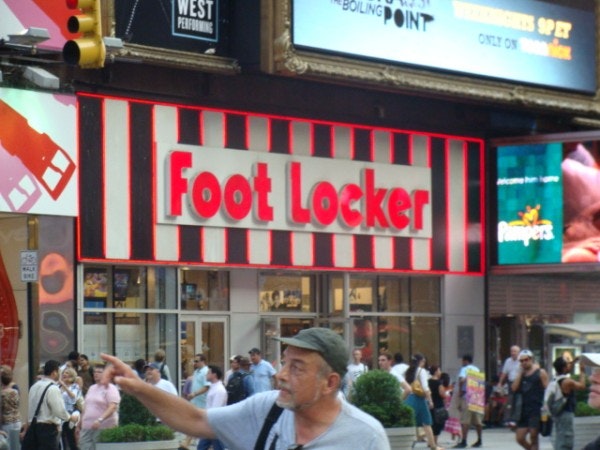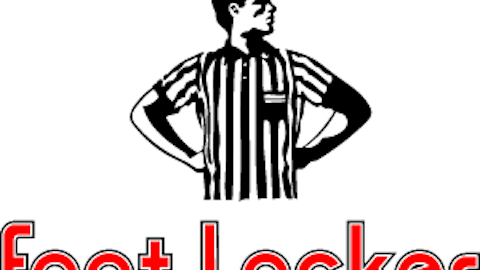Athletic footwear retailer Foot Locker, Inc. (NYSE:FL) announced fantastic fourth quarter results last Friday morning, finishing off a tepid 2012. Revenue jumped 14% year-over-year to $1.7 billion thanks to an extra selling week, which was slightly better than consensus estimates. Earnings per share, adjusted for one-time impairment charges, jumped 33% year-over-year to $0.73 per share, slightly above consensus estimates. This did, however, include a $0.09 benefit from the extra week during the quarter.

Same-store sales, one of my favorite metrics to measure the performance of retailers, were fantastic, growing 7.9% year-over-year. The winter quarter is notoriously strong as several of the company’s partners, including NIKE, Inc. (NYSE:NKE) and Adidas, release extremely popular basketball models, and this winter was no different. NIKE, Inc. (NYSE:NKE)’s Jordan Brand in particular had a strong release slate, and the new leadership of the Jordan Brand has pushed for a stronger cadence of releases than we’ve seen in prior years. This could boost NIKE, Inc. (NYSE:NKE)’s North American results, but China remains a huge question mark. During NIKE, Inc. (NYSE:NKE)’s second quarter, in a stark departure from the rest of the company, China was a complete disaster, in my view. Sales of footwear dipped 9% compared to the prior year, apparel sales fell 17%, and total sales fell 12%. Broader economic headwinds remain prevalent, but management took responsibility for the drop in sales. CEO Mark Parker mentioned a change in fit geared toward the Chinese consumer has started to hit the market. Management also indicated that the company will focus on clearing inventory and maintaining brand positioning, which resulted in a futures decline of 7% (excluding currency) during the period.
On the profit side, the gross margin was 100 basis points higher at 32.9%, driven in large part by lower markdowns, and also benefiting from superior IMUs (initial mark-ups). We’re also seeing a much higher degree of rational pricing from competitors like Finish Line Inc (NASDAQ:FINL) and the direct-to-consumer businesses of both NIKE, Inc. (NYSE:NKE) and Adidas. We’re seeing the companies become much more selective with regards to taking markdowns, which in turn has made the consumer less willing to wait—especially if a shoe is in high demand. We believe inventory management is also much more superior, allowing the Foot Locker, Inc. (NYSE:FL) to meet demand instead of having too much supply. SG&A was down 40 basis points as a percentage of sales to 21.2%, but the firm had the added benefit of the extra selling week, which accounted for 20 basis points of leverage. I see only modest SG&A leveraging going forward, as the company has done a wonderful job of controlling costs.
Speaking of Finish Line, we actually think its relative value looks solid (shown below).

Although Foot Locker, Inc. (NYSE:FL), FootAction, Champs, and Eastbay are all performing well, Lady Foot Locker, Inc. (NYSE:FL) posted flat same-store sales growth. The company is working to figure out what to do to stabilize the business, but we think it the women’s athletic footwear market is much more difficult to navigate. Unlike men’s, which can rely on selling limited LeBron James or Michael Jordan models, Lady Foot Locker has to compete with Nordstrom, Finish Line, and direct-to-consumer distribution from Nike and Adidas. Women’s purchasing motives are a bit different, and frankly, there’s little reason for women to go to Lady Foot Locker compared to other businesses.
On the capital allocation front, Foot Locker, Inc. (NYSE:FL) boosted its quarterly dividend 11% to $0.20 per share—an annual yield of 2.4% at current levels. Management also boosted the share repurchase program to $600 million, so we believe earnings per share growth will look fairly strong in 2013, even if sales growth isn’t as robust. The company also plans to spend $220 million on capital expenditures, up from $163 million this year and above the firm’s target of $160 million average over the next five years. Free cash flow for the year was $253 million, so I’m a little disappointed to see a sharp increase in capital spending in 2013. However, the company plans to spend a significant amount on technology investments, which could help boost EBIT margins.
Going forward, the firm anticipates low-single digits same-store sales growth, and business has been a bit turbulent year-to-date. We believe the payroll tax, but mostly the slow cadence of tax refunds, can be blamed, and I think NIKE, Inc. (NYSE:NKE) and—for the first time in ages—Reebok have strong premium product releases planned for 2013, so I think Foot Locker, Inc. (NYSE:FL)’s business will be absolutely fine this year. However, basketball shoes are quite popular as a fashion trend, so if/when the trend subsides, Foot Locker will be the first company to feel the pain. Nevertheless, shares look fairly valued at this time, so I’m not interested in adding a position to the portfolio of Valuentum’s Best Ideas Newsletter.
The article As Foot Locker Falls, Are Shares Still Too Expensive? originally appeared on Fool.com and is written by RJ Towner.
Copyright © 1995 – 2013 The Motley Fool, LLC. All rights reserved. The Motley Fool has a disclosure policy.


